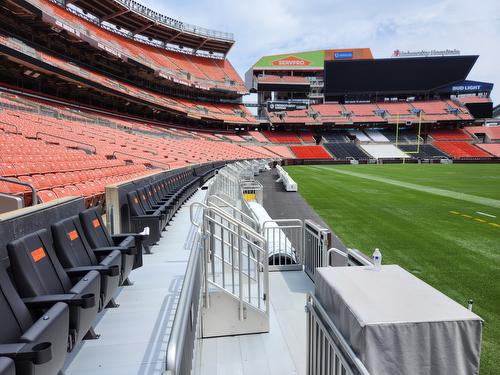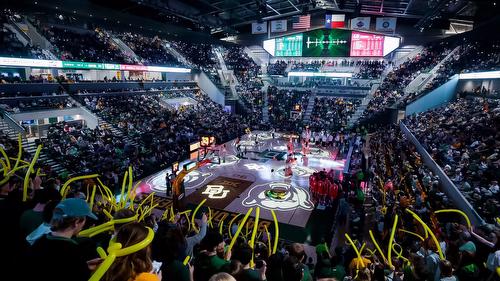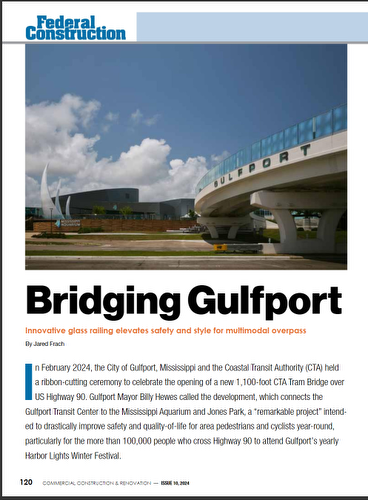


The Role of Glass Railing in Enhancing Daylighting
Jan 30, 2024
There’s no denying that daylighting – the harvesting and distribution of natural light – continues to emerge as a key design element for commercial buildings. As an increasing number of businesses recognize the many health, energy and environmental benefits that daylighting offers, designers and engineers are looking for new ways to let the light in.
Research clearly supports this trend with daylighting directly linked to improved mood, enhanced morale, less fatigue and reduced eyestrain* – factors that can and will lead to increased job satisfaction and productivity. Equally important are the cost savings daylighting offers; according to a report by the U.S. Department of Energy, total energy costs can be reduced by as much as 1/3 through the strategic use of daylighting technologies in some commercial buildings.**
And finally, reducing the use of electrical energy also reduces the amount of greenhouse gases released into the environment. In fact, daylighting has become so important to the building industry in regard to the environment that it is considered a critical performance measure in green building certification programs such as LEED.
Safety, Style and Sustainability
While windows and skylights remain the first and most obvious daylighting choices for commercial buildings, other architectural elements can enhance the impact of daylighting and contribute considerable benefits. One such option is glass railing. When used on stairways, overlooks and walkways, glass railing can play a key role in facilitating light infiltration. As part of an overall integrated design, or a retrofit, glass railing can go a long way toward opening up a space and enhancing the ambiance and safety of any environment from healthcare and educational settings to sports complexes and office spaces.
The David A. Tepper Quadrangle at Carnegie Mellon University is a great example of a building intentionally designed to harness the power of daylighting. The campus’ largest building reflects a new model of higher education that connects teaching, learning and innovation. Open from floor to ceiling, the design of the space was created to offer an environment for collaboration and interconnection. It’s modern design, enhanced throughout by Sightline Commercial Solutions’ Track Rail™ frameless glass railing system and topped off by a glass roof, emphasizes open space with an abundance of natural light for improving the well-being of the students and faculty while decreasing stress levels.
Surrounded by a freshwater lake and acres of lush wetlands, the 187,000 sq. ft. facility features a distinctive indoor-outdoor concept that emphasizes the environment while encouraging natural light to permeate the building, especially in the 44-foot-tall Grand Atrium. Enhancing sightlines and safety throughout the state-of-the-art facility are more than 2,500 linear feet of clear glass Track Rail featured in the atrium and across the exterior balconies to optimize views and enhance employee wellness.
Factors to Consider
There are several factors to keep in mind when looking to leverage glass railings as part of a building’s daylighting system. As a leading provider of architectural railings, Sightline has more than three decades of experience manufacturing glass railings and working with glaziers, as well as architects, general contractors and installers. Following are five key considerations we prioritize with our customers:
- Make sure the glass railings are integrated within the overall design. Include them in all plans from the start. Particularly when glass railings are being considered, architects and glaziers should enlist the help and expertise of an experienced manufacturer at the beginning of design planning to best understand what’s possible and what’s required for an optimal outcome.
- Assess your light sources. Some studies show that too much light can be distracting or irritating.
- Choose the right glass type to fit the needs and design of the building. Glass is offered in a variety of options ranging from clear tempered and laminated to low iron, fritted, PVB or SGP interlayer, as well as colored or patterned interlayer, to name a few. There is even glass that can adjust from clear to frosted for added control and privacy.
- Fabricate off-site for efficiency on-site. Pre-engineered systems allow glaziers and contractors to work faster and accomplish more at the job site. With Sightline, for instance, each component is labeled to correspond with setup drawings and a detailed installation guide is provided. This translates to a more efficient installation process, which in turn, yields time savings and lower labor costs in the field. Engineered systems also tend to see fewer change orders and callbacks, which can add considerable costs to a project.
- Make sure your supplier is up to date with the latest technologies, such as 3-D scanning. While it has been around for years, the building and architectural metal industries are just now tapping into its potential. This technology offers a faster project turnaround, improved safety and cost savings.
Our team utilized 3-D laser scanning technology to create a signature, multi-level curved glass staircase for the lobby of Colorado State University Health and Medical Center in Ft. Collins. When the original railing supplier was unable to complete the work just as the project was 90% complete, we were able to step in and quickly produce the remaining scope, integrating it seamlessly with the existing work thanks to our high-definition surveying capabilities. The process used a 3-D scanning tool to produce high accuracy mapping of the project’s design and dimensions that eliminated the need for field dimensioning and fabrication rework.
Features such as all-glass facades, exterior glass windscreens and glass architectural railings have been shown to provide a wide range of benefits from reducing depression to increasing quality of sleep and decreasing the length of a hospital stay. The many benefits glass has to offer makes it an excellent investment that is bound to pay off in both health and cost savings for years to come. For more information about the role that glass railings can play in enhancing daylighting, visit www.sightlinecommercial.com.
# # #
Sources
*National Renewable Energy Laboratory
About the Author
Jon Chase is Chief Engineering Officer of Minneapolis-based Sightline Commercial Solutions. Formerly Trex Commercial and Staging Concepts, Sightline is a leading fabricator of architectural railing, metal, glazing and portable platform solutions with more than 30 years of expertise in designing custom solutions for all types of venues, from sports arenas and stadiums to performing arts spaces, educational facilities, hospitality settings and worship spaces. To learn more, visit www.sightlinecommercial.com.






































